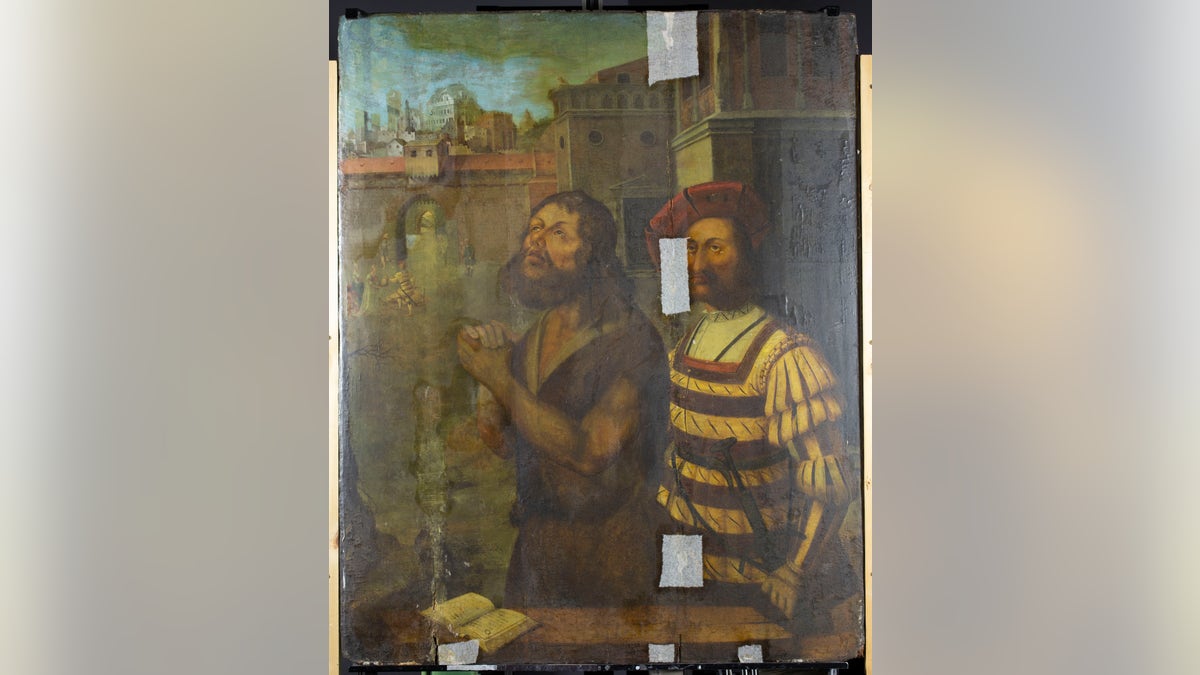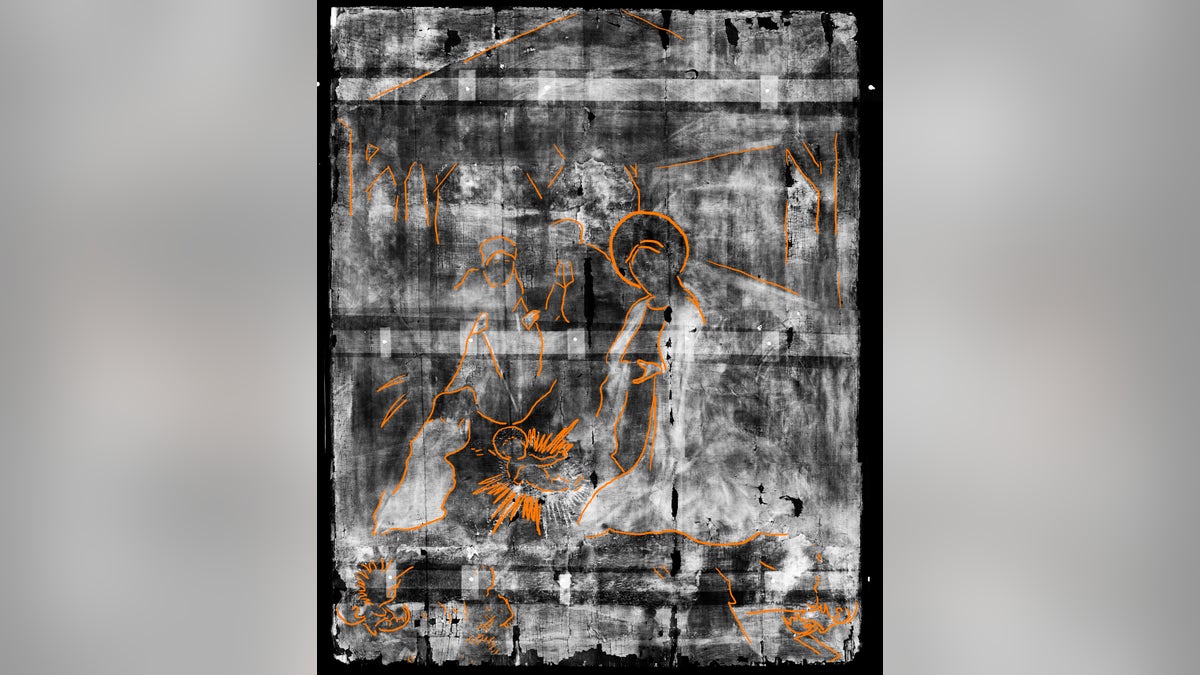Fox News Flash top headlines for Dec. 24
Fox News Flash top headlines for Dec. 24 are here. Check out what's clicking on Foxnews.com
Just before Christmas, a hidden Nativity scene has been discovered after being tucked away under another painting for centuries.
The artwork, which is believed to be around 400 years old and is painted in the late medieval style, shows the beheading of St. John the Baptist. It is painted onto a piece of canvas spread over a large wooden panel.
Art conservators from Northumbria University in the U.K. who were examining an X-ray of the artwork were surprised to discover another image underneath -- featuring angels with halos, a baby in a manger and the outline of a structure that seems to be a stable.
NASA'S HUBBLE SPOTS STUNNING 'PINWHEELING' GALAXY

The painting as it appears today. It depicts the beheading of St. John the Baptist. (Northumbria University and The Bowes Museum)
"It really is quite unusual to find paintings hidden in this way and to discover a Nativity scene in this detail and just before Christmas was really incredible," said Nicky Grimaldi, senior lecturer in conservation of fine art at Northumbria, in a statement.
The painting's wooden structure had deteriorated significantly over the years, so conservators and curators wanted to assess the damage as well as determine the artwork's background and age.
“The first stage of most investigations of this kind is to carry out an x-ray to understand what is going on underneath the layer of paint we see on the surface. That was when we realized there was more to the painting than we originally thought," Grimaldi explained.
The X-ray revealed several figures, including the outline of what could be one of the three wise men. Also visible is the outline of a baby in a manger with a halo around its head.
MASSIVE, 2,034-FOOT ASTEROID WILL ZOOM PAST EARTH JUST AFTER CHRISTMAS

X-rays of a medieval painting revealed a Nativity scene that was painted over centuries ago. (Northumbria University and The Bowes Museum)
“It was common practice to apply gold leaf to these type[s] of religious paintings and in the x-ray, we can see that gold is present in the halo around the baby’s head," Grimaldi said in the statement.
The next step is to carry out a chemical analysis of the paint used in the artwork, with small particles tested using Northumbria’s state-of-the-art equipment and techniques, including a scanning electron microscope, energy-dispersive x-ray spectroscopy and infrared reflectography.
As Live Science reports, earlier this year, details of hidden images were revealed in another painting, Leonardo da Vinci's "The Virgin of the Rocks." In that case, the concealed image was an older version of the same scene, but with characters in different positions.

